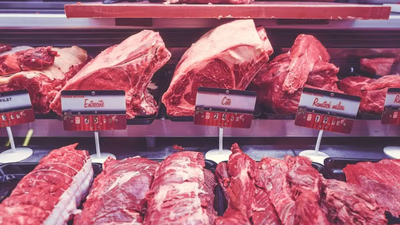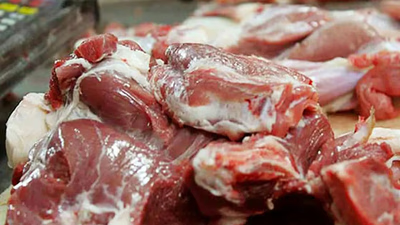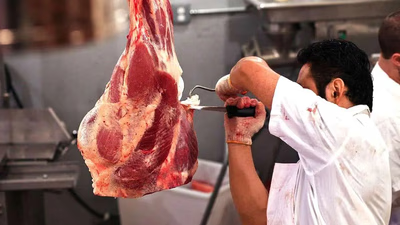
Meat trade dynamics in Asia"s growing markets. "
Domestic demand and consumption for meat is influential in the domestic markets of the West Asian region. Population growth and lifestyle changes can lead to an increase in demand for meat, and these things can cause the domestic market to grow. Trade policies such as tariffs, import and export restrictions, trade facilities and trade agreements between countries play a significant role in the import and export of meat in the West Asian region. Trade policies are the organizer for the meat trade in this region.
The ability to produce and export quality and competitive meat in international markets is important. Weather, natural resources, transportation and production infrastructure, technology and expertise, industrial and health standards and regulations play an important role in creating the groundwork for meat production and export in the West Asian region. The presence of competition in domestic and international markets is also effective. Competition increases quality and lowers prices, and as a result, strengthens the ability to compete in global markets. According to the size and demand of Asian population, the largest meat supply and demand markets in this region are:
- With its large population and significant economic growth, China is the largest meat supply and demand market in Asia. There is a high demand for all types of meat, including red meat and chicken, in this country.
- With its high population and red meat consumption culture, India is one of the largest meat supply and demand markets in Asia. Beef consumption is prohibited in India due to religious restrictions, but chicken and veal are very common.
- Japan is one of the largest and most advanced meat supply and demand markets in Asia. Red meat and fish are very popular in Japan, and high standards of health and quality are considered in this market.
- South Korea is an important supply and demand market for meat in Asia, with strong economic growth and high interest in meat consumption. Consumption of beef and chicken meat is very common in this country.
- With a high population and rapid economic growth, Vietnam is an important supply and demand market for meat in Asia. Consumption of beef, chicken and pork is very common in this country.
- With a large population and significant economic growth, Indonesia is a strong supply and demand market for meat in Asia. Consumption of beef, chicken and pork is very popular in this country.
In general, due to the high population and economic growth in some Asian countries, the meat supply and demand markets in this region are very large and have high potential. Of course, each country may have its own consumption patterns and eating habits. Along with the previous answer, this point should also be kept in mind that due to changes in global markets and political, economic and social factors, the supply and demand markets for meat in Asia may change. to change
The development of the meat industry and meat products, new technologies in production and processing, and industrial innovations play an important role in the marketing, import and export of meat in this region. Restrictions such as political restrictions, export and import laws and regulations, military and security problems, transportation problems and problems related to infrastructure can hinder the development of meat import and export in the West Asian region.
-

Meat pricing is a critical aspect of international trade, influenced by supply and demand dynamics, production costs, and trade agreements. Countries with rich natural resources often emerge as prominent meat exporters, while others rely on imports to meet domestic demand. The balance between supply and demand significantly affects meat prices; high demand with low supply typically drives prices up, whereas excess supply can lead to price reductions. Production costs, including animal feed and labor, also play a vital role in determining meat prices. Legal restrictions and infrastructural challenges can further impact pricing by increasing costs. Competitive markets may see lower prices as producers strive to attract consumers. Additionally, global market changes such as exchange rate fluctuations and economic policies can influence import and export prices. The quality of meat is another determinant; higher quality meats command premium prices due to their specific characteristics.
Regulatory standards for health and safety are crucial in maintaining the integrity of international meat trade. Overall, the interplay of these factors shapes the landscape of meat pricing in world markets.
-

The meat market in West Asia is significantly influenced by domestic demand, population growth, and lifestyle changes. Trade policies, including tariffs and agreements, play a crucial role in shaping the import and export landscape. Key factors affecting meat production include natural resources, infrastructure, technology, and health standards. Competition within domestic and international markets enhances quality while reducing prices. Major players in the Asian meat market include China, India, Japan, South Korea, Vietnam, and Indonesia. Each country exhibits unique consumption patterns influenced by cultural preferences and economic conditions. For instance, while China leads in overall demand for various meats, India has restrictions on beef due to religious beliefs. Japan prioritizes high health standards for its meat products.
The rapid economic growth across these nations indicates a robust potential for the meat supply chain. However, challenges such as political instability and infrastructure issues can impede trade development. Innovations in production and processing technologies are essential for enhancing market competitiveness.
-

Meat consumption in the Middle East and West Asia is influenced by cultural, religious, and economic factors. Red meat, particularly from sheep, cows, and goats, is a staple in many traditional dishes such as kebabs and Qorme Sabzi. Chicken is also widely consumed, with various preparations like tandoori chicken being popular. The Islamic dietary laws prohibit pork consumption, which is rooted in both religious beliefs and historical practices. Halal slaughtering methods are essential for meat to be deemed acceptable for Muslim consumers. Fish and seafood are prevalent along the Persian Gulf and Gulf of Oman coasts. The growing trend towards vegetarianism may alter future meat consumption patterns. Trust in imported meats varies among consumers; many prefer locally sourced products due to concerns about halal compliance and quality standards. This highlights the importance of transparency regarding the origin and preparation methods of imported meats.
-

The Middle East, with its rich history in animal husbandry, is a significant player in global meat production. The region"s diverse climates support various livestock farming practices, leading to high domestic meat consumption. Key meats produced include beef, goat, chicken, and sheep, with countries like Iran, Iraq, Turkey, and Saudi Arabia being prominent producers. Goat meat is particularly valued in local cuisines, while chicken serves as a vital protein source. Additionally, fish farming thrives along the Persian Gulf and Arabian Sea coasts. However, the region faces challenges such as water scarcity impacting production capabilities and reliance on imports to meet demand. Cultural factors also influence meat production; for instance, pork is largely prohibited in Muslim-majority countries but is produced in non-Muslim regions like Armenia and Georgia. Understanding these dynamics is crucial for stakeholders in the B2B marketplace and supply chain solutions across Asia. "




